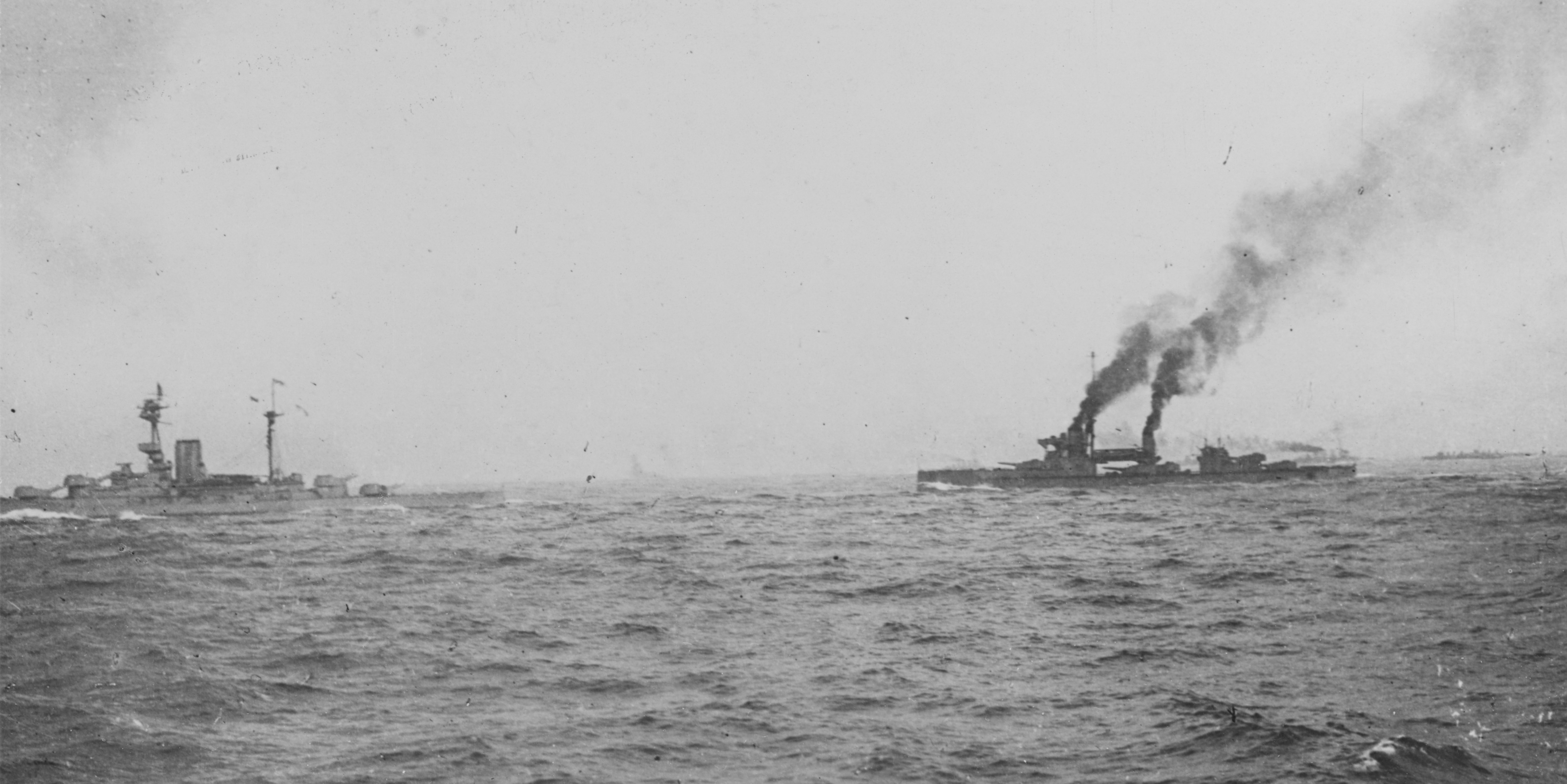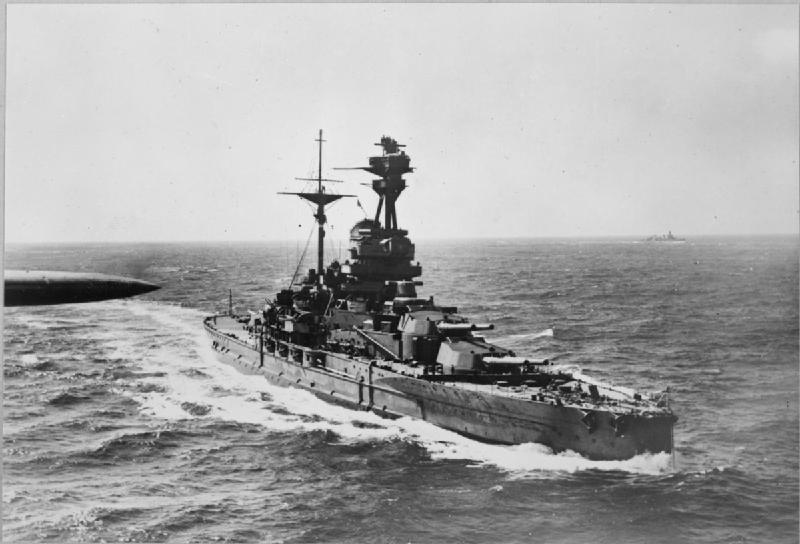1st Battle Squadron on:
[Wikipedia]
[Google]
[Amazon]
The 1st Battle Squadron was a naval squadron of the British
 During the Battle of Jutland, the composition of the 1st Battle Squadron was as follows:Macintyre, Donald. ''Jutland'' Evans Brothers Ltd. 1957;
* Sixth Division
* HMS ''Marlborough'' Flagship of Vice-Admiral Sir Cecil Burney; Captain G. P. Ross;
* HMS ''Revenge'' Captain E. B. Kiddle;
* HMS ''Hercules'' Captain L. Clinton-Baker;
* HMS ''Agincourt'' Captain H. M. Doughty;
* Fifth Division
* HMS ''Colossus'' Flagship of Rear Admiral E. F. A. Gaunt; Captain A. D. P. R. Pound;
* HMS ''Collingwood'' Captain J. C. Ley;
* HMS ''St. Vincent'' Captain W. W. Fisher;
* HMS ''Neptune'' Captain V. H. G. Bernard;
During the Battle of Jutland, the composition of the 1st Battle Squadron was as follows:Macintyre, Donald. ''Jutland'' Evans Brothers Ltd. 1957;
* Sixth Division
* HMS ''Marlborough'' Flagship of Vice-Admiral Sir Cecil Burney; Captain G. P. Ross;
* HMS ''Revenge'' Captain E. B. Kiddle;
* HMS ''Hercules'' Captain L. Clinton-Baker;
* HMS ''Agincourt'' Captain H. M. Doughty;
* Fifth Division
* HMS ''Colossus'' Flagship of Rear Admiral E. F. A. Gaunt; Captain A. D. P. R. Pound;
* HMS ''Collingwood'' Captain J. C. Ley;
* HMS ''St. Vincent'' Captain W. W. Fisher;
* HMS ''Neptune'' Captain V. H. G. Bernard;
 Following the Battle of Jutland, the 1st Battle Squadron was reorganized, with ''Colossus'', ''Hercules'', ''St. Vincent'', ''Collingwood'' and ''Neptune'' all transferred to the
Following the Battle of Jutland, the 1st Battle Squadron was reorganized, with ''Colossus'', ''Hercules'', ''St. Vincent'', ''Collingwood'' and ''Neptune'' all transferred to the
First Battle Squadron at DreadnoughtProject.org
Royal Navy History
{{Use dmy dates, date=June 2017 Battle squadrons of the Royal Navy Ship squadrons of the Royal Navy in World War I Squadrons of the Royal Navy in World War II Military units and formations established in 1912 Military units and formations disestablished in 1945
Royal Navy
The Royal Navy (RN) is the United Kingdom's naval warfare force. Although warships were used by English and Scottish kings from the early medieval period, the first major maritime engagements were fought in the Hundred Years' War against Fr ...
consisting of battleship
A battleship is a large armour, armored warship with a main artillery battery, battery consisting of large caliber guns. It dominated naval warfare in the late 19th and early 20th centuries.
The term ''battleship'' came into use in the late 1 ...
s. The 1st Battle Squadron was initially part of the Royal Navy's Grand Fleet
The Grand Fleet was the main battlefleet of the Royal Navy during the First World War. It was established in August 1914 and disbanded in April 1919. Its main base was Scapa Flow in the Orkney Islands.
History
Formed in August 1914 from the F ...
. After World War I
World War I (28 July 1914 11 November 1918), often abbreviated as WWI, was List of wars and anthropogenic disasters by death toll, one of the deadliest global conflicts in history. Belligerents included much of Europe, the Russian Empire, ...
the Grand Fleet was reverted to its original name, the Atlantic Fleet. The squadron changed composition often as ships were damaged, retired or transferred.
History
First World War
As an element in the Grand Fleet, the Squadron participated in theBattle of Jutland
The Battle of Jutland (german: Skagerrakschlacht, the Battle of the Skagerrak) was a naval battle fought between Britain's Royal Navy Grand Fleet, under Admiral Sir John Jellicoe, and the Imperial German Navy's High Seas Fleet, under Vice ...
.
August 1914
On 5 August 1914, the squadron was constituted as follows: * HMS ''Marlborough'' * HMS ''Collingwood'' * HMS ''Colossus'' * HMS ''Hercules'' * HMS ''Neptune'' * HMS ''St. Vincent'' * HMS ''Superb'' * HMS ''Vanguard''Battle of Jutland, June 1916
 During the Battle of Jutland, the composition of the 1st Battle Squadron was as follows:Macintyre, Donald. ''Jutland'' Evans Brothers Ltd. 1957;
* Sixth Division
* HMS ''Marlborough'' Flagship of Vice-Admiral Sir Cecil Burney; Captain G. P. Ross;
* HMS ''Revenge'' Captain E. B. Kiddle;
* HMS ''Hercules'' Captain L. Clinton-Baker;
* HMS ''Agincourt'' Captain H. M. Doughty;
* Fifth Division
* HMS ''Colossus'' Flagship of Rear Admiral E. F. A. Gaunt; Captain A. D. P. R. Pound;
* HMS ''Collingwood'' Captain J. C. Ley;
* HMS ''St. Vincent'' Captain W. W. Fisher;
* HMS ''Neptune'' Captain V. H. G. Bernard;
During the Battle of Jutland, the composition of the 1st Battle Squadron was as follows:Macintyre, Donald. ''Jutland'' Evans Brothers Ltd. 1957;
* Sixth Division
* HMS ''Marlborough'' Flagship of Vice-Admiral Sir Cecil Burney; Captain G. P. Ross;
* HMS ''Revenge'' Captain E. B. Kiddle;
* HMS ''Hercules'' Captain L. Clinton-Baker;
* HMS ''Agincourt'' Captain H. M. Doughty;
* Fifth Division
* HMS ''Colossus'' Flagship of Rear Admiral E. F. A. Gaunt; Captain A. D. P. R. Pound;
* HMS ''Collingwood'' Captain J. C. Ley;
* HMS ''St. Vincent'' Captain W. W. Fisher;
* HMS ''Neptune'' Captain V. H. G. Bernard;
1917 and 1918
 Following the Battle of Jutland, the 1st Battle Squadron was reorganized, with ''Colossus'', ''Hercules'', ''St. Vincent'', ''Collingwood'' and ''Neptune'' all transferred to the
Following the Battle of Jutland, the 1st Battle Squadron was reorganized, with ''Colossus'', ''Hercules'', ''St. Vincent'', ''Collingwood'' and ''Neptune'' all transferred to the 4th Battle Squadron
The 4th Battle Squadron was a squadron of the British Royal Navy consisting of battleships. The 4th Battle Squadron was initially part of the Royal Navy's Home Fleet (1912–14) and then the Grand Fleet after the outbreak of the First World War ...
. In January 1917, the squadron was constituted as follows:
* HMS ''Marlborough''
* HMS ''Agincourt''
* HMS ''Benbow'' – joined July, 1916
* HMS ''Canada''
* HMS ''Emperor of India'' – joined July, 1916
* HMS ''Revenge''
* HMS ''Royal Oak'' – joined May, 1916
* HMS ''Royal Sovereign'' – joined June, 1916
By 1918, ''Agincourt'' had been transferred to the 2nd Battle Squadron, and ''Resolution'', ''Ramillies'' and ''Iron Duke'' had joined the squadron on completion.
Second World War
For many years the squadron served in the Mediterranean as the main British battle force there. On 3 September 1939 the 1st Battle Squadron, serving in theMediterranean Fleet
The British Mediterranean Fleet, also known as the Mediterranean Station, was a formation of the Royal Navy. The Fleet was one of the most prestigious commands in the navy for the majority of its history, defending the vital sea link between t ...
, consisted of ''Barham'', ''Warspite'' and ''Malaya'', with headquarters at Alexandria
Alexandria ( or ; ar, ٱلْإِسْكَنْدَرِيَّةُ ; grc-gre, Αλεξάνδρεια, Alexándria) is the second largest city in Egypt, and the largest city on the Mediterranean coast. Founded in by Alexander the Great, Alexandri ...
, Egypt
Egypt ( ar, مصر , ), officially the Arab Republic of Egypt, is a List of transcontinental countries, transcontinental country spanning the North Africa, northeast corner of Africa and Western Asia, southwest corner of Asia via a land bridg ...
, under the command of Vice-Admiral Geoffrey Layton.
In December 1943 the Squadron was under the command of Vice Admiral Arthur Power
Admiral of the Fleet Sir Arthur John Power, (12 April 1889 – 28 January 1960) was a Royal Navy officer. He took part in the First World War as a gunnery officer and saw action in the Dardanelles campaign. During the inter-war years he comma ...
. In January 1944 the Eastern Fleet was reinforced by , , , , and seven destroyers. The Admiralty sent this force out to India under the title of the First Battle Squadron.
From November 1944, the squadron served in the British Pacific Fleet
The British Pacific Fleet (BPF) was a Royal Navy formation that saw action against Japan during the Second World War. The fleet was composed of empire naval vessels. The BPF formally came into being on 22 November 1944 from the remaining ships o ...
under the command of Vice-Admiral Henry Rawlings, who also served as Second-in-Command of the Fleet. It consisted of , , and at various times.
Admirals commanding
Commanders were as follows: * Vice-Admiral Sir Stanley Colville (1912–14) * Vice-Admiral Sir Lewis Bayly (June–December 1914) * Admiral Sir Cecil Burney (1914–16) * Vice-Admiral Sir Charles Madden (1916–19) * Vice-Admiral Sir Sydney Fremantle (1919–21) * Vice-Admiral Sir William Nicholson (1921–22) * Vice-Admiral Sir Edwyn Alexander-Sinclair (1922–24) * Rear-Admiral William Fisher (1924–25) * Rear-Admiral Cecil Staveley (1925–26) * Vice-Admiral Sir Michael Hodges (1926–27) * Vice-Admiral Sir John Kelly (1927–29) * Vice-AdmiralHoward Kelly Howard Kelly may refer to:
* Howard Kelly (Royal Navy officer) - (1873-1952) Royal Navy admiral
* Howard Atwood Kelly
Howard Atwood Kelly (February 20, 1858 – January 12, 1943) was an American gynecologist. He obtained his B.A. degree and M ...
(1929–30)
* Vice-Admiral Sir Wiliam Fisher (1930–32)
* Vice-Admiral Sir Roger Backhouse
Admiral of the Fleet Sir Roger Roland Charles Backhouse, (24 November 1878 – 15 July 1939) was a Royal Navy officer. He served in the First World War as a cruiser commander and after the war became a battle squadron commander and later Comm ...
(1932–34)
* Vice-Admiral Sir Charles Forbes (1934–36)
* Vice-Admiral Hugh Binney
Admiral Sir Thomas Hugh Binney, (9 December 1883 – 8 January 1953) was a senior officer in the Royal Navy and the 16th Governor of Tasmania from 1945 to 1951.
Early life
Binney was born in Douglas, Isle of Man on 9 December 1883, the son of Th ...
(1936–38)
* Rear-Admiral Ralph Leatham (1938–39)
* Vice-Admiral Geoffrey Layton (January–November 1939)
* Rear-Admiral Henry Pridham-Wippell
Admiral Sir Henry Daniel Pridham-Wippell, (12 August 1885 – 2 April 1952) was a Royal Navy officer who served in the First and Second World Wars.
Early life
Educated at The Limes, Greenwich, and at Royal Naval College, Dartmouth, Henry Daniel ...
(July–October 1940)
* Vice-Admiral John Tovey (October–December 1940)
* Rear-Admiral Bernard Rawlings (1940–41)
* Vice-Admiral Sir Henry Pridham-Wippell (1941–42)
* Vice-Admiral Sir Arthur Power (1943–44)
* Vice-Admiral Sir Bernard Rawlings (1944–45)
Rear-Admirals, Second-in-Command
Post holders included: * Rear-Admiral Charles E. Madden, 5 January 1912 – 10 November 1912 * Rear-Admiral The Hon. Somerset A. Gough-Calthorpe, 10 December 1912 – 10 December 1913 * Rear-Admiral Hugh Evan-Thomas, 10 December 1913 – 25 August 1915 * Rear-AdmiralErnest Gaunt
Admiral Sir Ernest Frederick Augustus Gaunt, (25 March 1865 – 20 April 1940) was an Australian-born Royal Navy officer who went on to be Commander-in-Chief, Western Approaches.
Naval career
Gaunt was born in Beechworth, Victoria, Australia, t ...
, 25 August 1915 – 12 June 1916
* Rear-Admiral Alexander L. Duff, 12 June 1916 – 30 November 1916
* Rear-Admiral Sir William C. M. Nicholson, 1 December 1916 – 20 March 1919
* Rear-Admiral The Hon. Victor A. Stanley, 1 April 1919 – 1 April 1920
* Rear-Admiral Henry M. Doughty, 24 March 1920 – 14 April 1921
* Rear-Admiral Sir Rudolf W. Bentinck, 3 May 1921 – 3 May 1922
* Rear-Admiral Arthur A. M. Duff, 3 May 1922
* Rear-Admiral William A. H. Kelly, 3 May 1923
* Rear-Admiral William H. D. Boyle, 3 May 1924 – 3 May 1924
* Rear-Admiral William W. Fisher, 14 October 1924 – 7 September 1925
* Rear-Admiral Cecil M. Staveley, 15 October 1925 – 1 October 1926
* Rear-Admiral David T. Norris, 1 October 1926
* Rear-Admiral Bernard St. G. Collard, 1 October 1927
* Rear-Admiral William M. Kerr, 20 March 1928 – 5 April 1929
* Rear-Admiral The Hon. Reginald A. R. P.-E.-E.-Drax, 12 April 1929 – 26 April 1930
* Rear-Admiral Henry D. Pridham-Wippell, 8 May 1940 – 24 October, 1941
References
External links
First Battle Squadron at DreadnoughtProject.org
Royal Navy History
{{Use dmy dates, date=June 2017 Battle squadrons of the Royal Navy Ship squadrons of the Royal Navy in World War I Squadrons of the Royal Navy in World War II Military units and formations established in 1912 Military units and formations disestablished in 1945